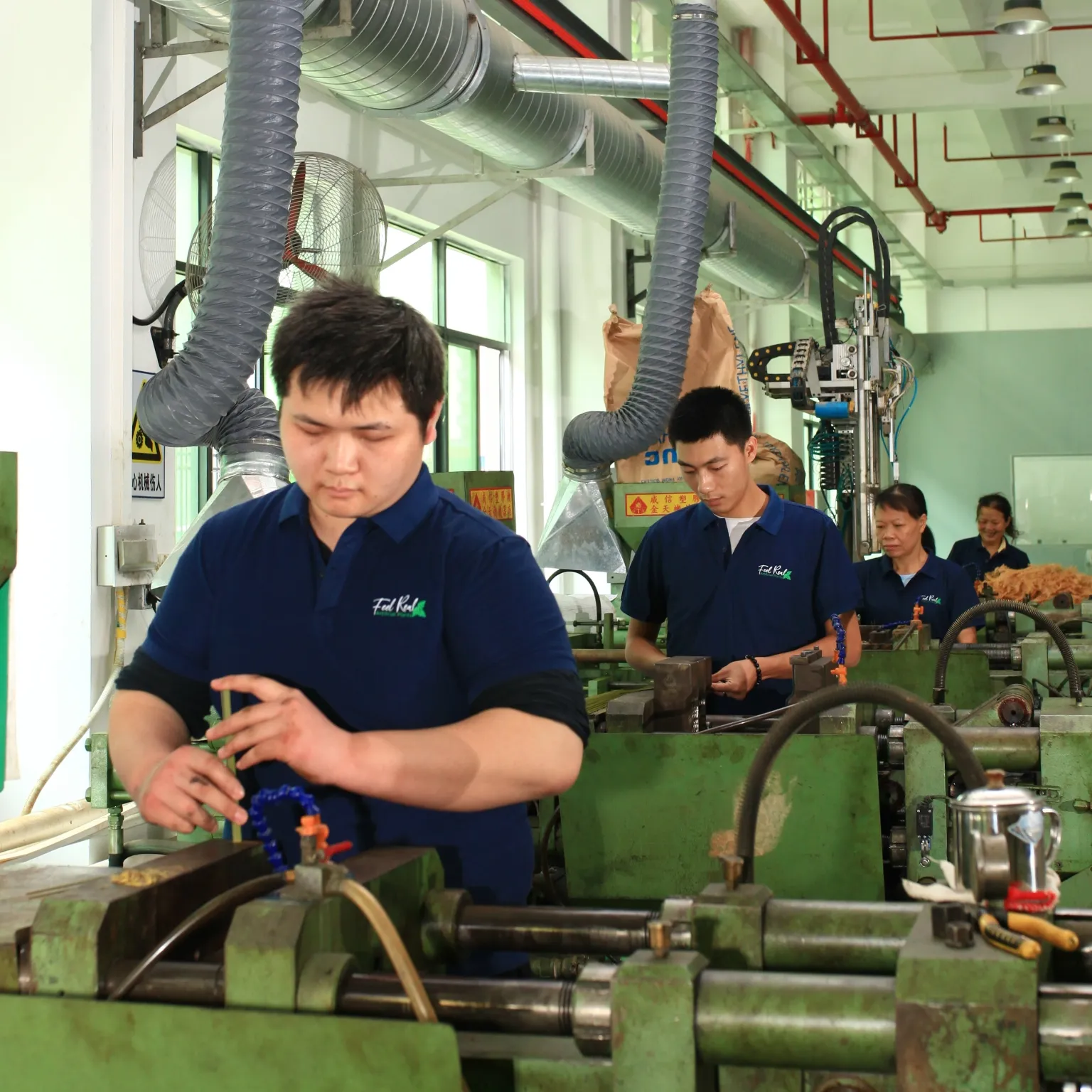Have you ever marveled at the lifelike artificial greenery in a shopping mall or online, only to be deterred by the price tag? Why are these ‘fake’ plants sometimes even more expensive than real ones? Most people think artificial plants are just plastic and fabric and should be cheap. But is that really the case?
The truth is, you’re not just paying for a “fake plant.” You’re investing in a piece of lasting, handcrafted decor. The price of high-quality artificial plants reflects a deep investment in premium materials (UV-resistant polymers, silk), hand-crafted manufacturing processes, detailed molding, multi-layer coloring, and skilled assembly.
As a professional manufacturer with deep experience in this industry, we want to offer a transparent look at the process. We will break down exactly what you’re paying for and reveals why a premium faux plant is a smartest long-term investment.
Last Updated: July, 22nd 2025 | Estimated Reading Time: 8 minutes
Premium Materials Used in High-Quality Artificial Plants
The biggest factor in the cost of artificial plants is the quality of the materials. Basic, low-cost plants use shiny, single-tone plastic that looks fake from a distance. High-end plants, however, use advanced materials to perfectly mimic nature.
Think of it like the difference between a fast-fashion polyester shirt and a tailored silk blouse. One is a temporary item, while the other is a quality garment. Premium artificial plants use materials like high-end PE or “real-touch” coated polymers that not only look authentic but feel real, too. They also include UV-resistant chemicals in the mix, ensuring your plant won’t fade to a sad, blue-green hue after one summer in a sunny spot.
Scientific research published in PMC demonstrates that UV-stabilized plastics can maintain their properties over extended periods when properly formulated. Premium artificial plants use UV-resistant silk and high-grade plastics that maintain their realistic appearance for years.
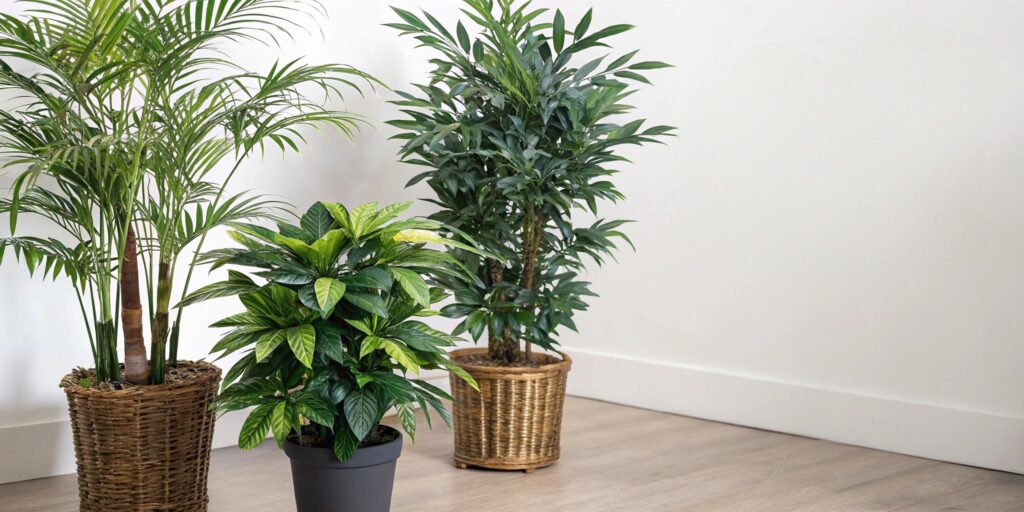
For Leaves & Petals: Silk, high-grade polymers, and latex are used to replicate the exact texture and subtle color variations of real leaves.
For Trunks & Stems: Many high-end artificial trees use real, preserved wood trunks and bark to achieve perfect botanical accuracy. The inner stems contain metal wires, allowing you to shape them for a more natural, less uniform appearance.
For sunny spots near windows or for outdoor use, investing in UV-resistant materials like high-quality PE (polyethylene) is crucial to prevent fading and ensure longevity. For commercial spaces or areas where safety is paramount, specially treated fire-retardant materials offer essential peace of mind. For less demanding indoor locations, classic options like polyester and silk provide beautiful results.
This decision directly impacts both the plant’s realism and its cost. Premium materials like polyurethane (PU) and ‘real-touch’ latex excel at mimicking the feel and matte finish of live plants, especially for succulents and orchids, placing them at a higher price point.
In contrast, the stiff, shiny plastic found on budget plants is an instant giveaway. Materials like silk and polyester strike an excellent balance, offering convincing realism and durability for indoor use without the premium cost, making them a popular and versatile choice.
From Design to Reality: How Lifelike Artificial Plants Are Made
Creating realistic artificial plants requires detailed molds, hand-painting, and individual leaf placement. Mass-produced fake plants use simple injection molding. But premium artificial trees and floor plants undergo multi-step processes including texture application, color variation, and natural imperfection replication.
Each artificial palnt, flower or hanging basket involves dozens of components assembled by skilled workers. The manufacturing complexity explains why realistic indoor trees costs significantly more than basic plastic plants.
Here’s what goes into making a quality artificial plant:
- Design phase: Craftsmen study live plants to capture distinctive features like eucalyptus’s silvery color and natural curl patterns. Before we create a mold, we deconstruct the real thing. Our design process begins by obtaining live specimens of a plant, like an Olive Tree. We don’t just glance at it; we digitally scan and photograph every element—the unique shape of each leaf, the subtle color shift from silver to green, the gnarled texture of the bark. This intensive R&D phase requires hours of skilled design work to create a 3D digital blueprint that is botanically accurate.
- Specialized molding: Advanced molds can capture every tiny detail vs. cheap ones that create flat, lifeless leaves. The digital blueprint is used to engineer high-precision steel molds. For a single, realistic palm tree, we may require over a dozen unique molds: several for different leaf sizes and shapes, others for varying branch thicknesses, and complex molds to replicate the trunk’s unique texture.
- Multi-layer coloring: This is where a plant truly comes to life. We don’t just spray-paint branches a uniform green. First, a base color is blended directly into the raw material (like PE or PVC). Skilled artisans then hand-paint additional layers to create depth, such as the lighter underside of a leaf or the subtle brown spots of a mature plant. Finally, a protective matte or semi-gloss finish is applied to mimic the natural sheen of a real leaf and add UV resistance.
- Skilled assembly: This stage is a meticulous assembly process guided by botanical principles. Our assemblers are trained to understand how real plants grow. They attach leaves at natural angles, ensure branches have a slight, realistic droop, and carefully integrate the main stems into a weighted, stable base. The internal wiring is tested to ensure it can be shaped by the end-user without breaking.
- Quality control: Our process doesn’t end after assembly. Every single plant is then passed to a dedicated Quality Control team for a multi-point inspection. Inspectors check for color consistency against master samples, test the structural integrity of each major branch, ensure the plant is stable in its base, and verify that all components are free from manufacturing defects. A plant that doesn’t meet every checkpoint is either reworked or rejected.
- Professional packaging: Finally, a premium product requires premium protection. Each plant model has its own custom-engineered packaging designed to prevent any movement or stress during shipping. This often involves custom-molded inserts that cradle the pot, internal cardboard bracing to support the main trunk, and careful wrapping of delicate foliage. The goal is to ensure the plant is suspended and secured.
This attention to detail at every stage is why premium artificial plants cost more – and why they’re worth it. When you pay for quality manufacturing, you’re investing in craftsmanship that can fool even experienced gardeners.
This commitment to quality is rooted in facts and our extensive factory experience crafting customer solutions. For instance, we know from customer feedback that a faux olive tree must not only look authentic up close but also maintain its delicate silver-green tones in direct sunlight. Our manufacturing process directly addresses these real-world requirements, ensuring each tree is a lasting and practical investment.
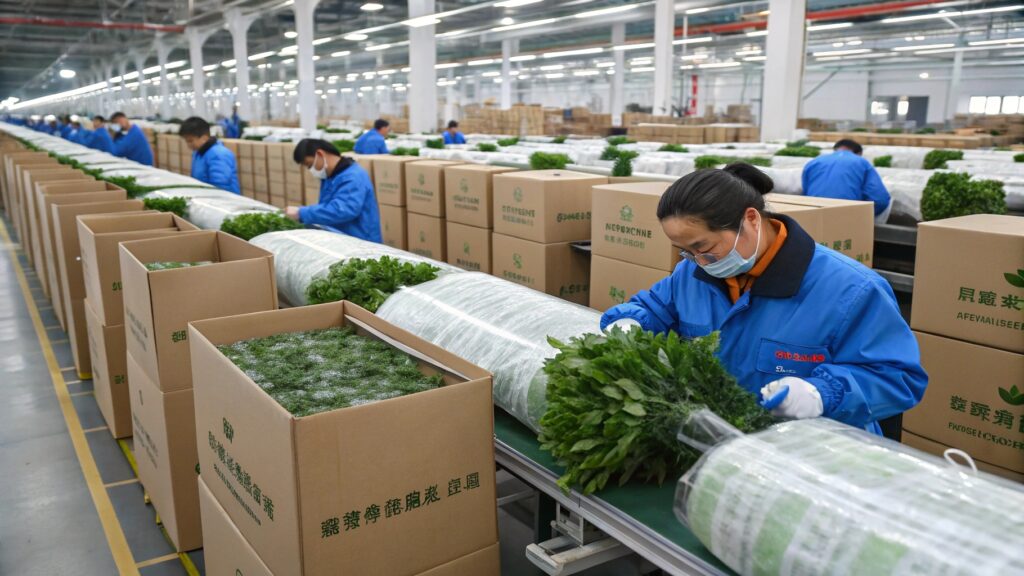
Hand-Crafted Realism: The Value of Artisanship in Artificial Plants
You know what separates a convincing artificial plant from obvious fake foliage? Human hands. While machines can pump out basic plastic leaves all day, it takes a skilled artisan to create the subtle imperfections and natural irregularities that fool your eye into thinking a plant is real.
Here’s what skilled craftspeople actually do that machines can’t: They study how real plants grow asymmetrically, hand-paint individual leaf veins with multiple colors, position each leaf at slightly different angles to mimic natural growth to make plants look authentically lived-in. A talented artisan can spend 6-8 hours on a single premium plant. They carefully arrange each component to create that organic, “grown not manufactured” appearance.
Our commitment to artisanship is about more than just aesthetics; it’s about providing tangible, factory-level solutions. For example, plants in high-traffic commercial areas (like hotel lobbies or restaurants) face unique durability challenges. Our skilled technicians use reinforced internal wiring and specialized adhesives at key stress points.
Furthermore, every plant assembled by hand, from a delicate fern to a complex faux olive tree, undergoes a rigorous, multi-point quality control inspection. We check for the structural integrity of each branch, the fastness of the hand-painted colors, and the security of every leaf.
This meticulous, experience-based process ensures the final product not only looks realistic but also withstands the demands of its intended environment. So, the higher labor cost directly translates into a lower total cost of ownership for our clients, minimizing the need for replacements and guaranteeing a lasting, high-quality aesthetic.

Size and Complexity: How They Affect the Cost of Artificial Plants
Larger artificial plants like outdoor palm trees or floor faux olive trees require more materials, longer production time, and specialized shipping. Outdoor artificial plants face additional challenges, requiring UV-resistant materials and weather-proof construction that significantly increases production costs compared to indoor decoration alternatives.
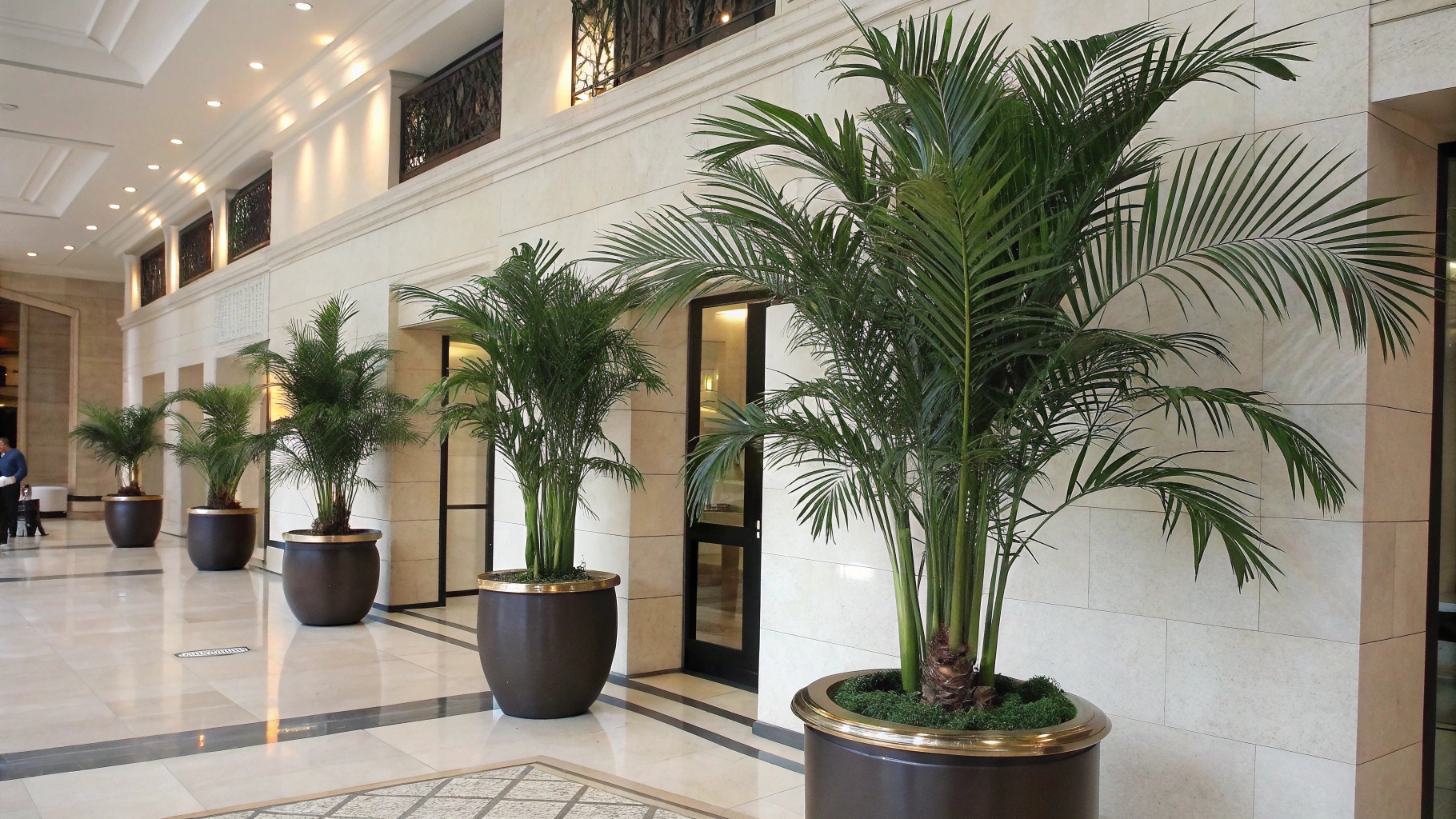
Here’s why size dramatically impacts pricing:
Materials and molds: A small succulent needs one mold and basic materials, while a 7-foot Olive Tree requires dozens of different molds for various leaf sizes, branch thicknesses, and trunk sections
Time investment: Small plants take hours to assemble; large trees can require weeks of skilled labor with workers hand-positioning hundreds of individual components
Detail complexity: Larger plants need more realistic imperfections – varied leaf sizes, natural color gradients, and authentic branch positioning that follows real growth patterns
Logistics costs: Big artificial trees need custom packaging, careful handling, and sometimes freight shipping instead of standard delivery
The Cost of Customising Artificial Plants
Sometimes you need an artificial plant that doesn’t exist in any catalog- – maybe perfectly matched foliage for your brand’s specific aesthetic. That’s when customization comes in, and honestly, it’s where costs can skyrocket faster than you’d expect.
Custom artificial plants aren’t just “pick different colors” – they’re complete redesigns from scratch:
- Unique sizing: Need a 15-foot olive tree for your restaurant’s double-height ceiling? They’ll create custom molds and structural engineering you won’t find anywhere else
- Specific color matching: Want eucalyptus in your company’s exact sage green? Prepare for time-intensive pigment blending and multiple sample rounds until it’s perfect
- Specialized materials: Fire-retardant fiddle leaf figs for commercial kitchens or UV-resistant snake plants for sun-drenched atriums require premium materials that cost significantly more
- Complex designs: Living walls with mixed succulents, hanging gardens with cascading ivy varieties, or topiary shapes that don’t exist in nature demand expert design work
Here’s the reality check: customization can double or triple your costs, but sometimes it’s worth every penny. I’ve seen custom artificial plant installations that become signature features of spaces. When you need something truly unique that standard options can’t deliver, custom work transforms from an expense into an investment in creating something valuable that perfectly fits your vision.

How Shipping and Packaging Affect Artificial Plant Prices?
Packages have to be handled with care. Packaging solutions that are up to the task. Such materials include protective wrapping and strong boxes, which contribute to the total cost. The logistics of sending big or fragile products (eg. Silk flowers and trees / artificial potted plant with pot) can be expensive. This is particularly relevant to international shipping, where tariffs and shipping fees may affect the final cost.
We’ve seen firsthand that improper packaging is the primary reason for returns. Therefore, we don’t just use strong boxes; we engineer custom shipping solutions. For a large, delicate artificial olive tree, for example, a simple box is not enough. We build a custom internal wooden or cardboard frame to suspend the plant, ensuring no weight rests on the branches. For plants with heavy pots, we use molded foam inserts that absorb shock and prevent cracking.
Furthermore, we provide solutions for complex logistics. For our business clients, we consolidate shipments to optimize container space, significantly reducing the per-unit cost. Our logistics team manages customs documentation proactively to navigate international tariffs efficiently, preventing costly delays and surprise fees for the customer.
This investment in intelligent packaging and logistics is our guarantee. It ensures the product, which took hours of skilled artisanship to create, arrives intact and ready for display.
The price of realistic artificial plants reflects sophisticated manufacturing processes and premium materials. High-quality artificial plants require specialized techniques, detailed craftsmanship, and high quality materials that can withstand years of use without fading or deteriorating.

Why a Great Fake Plant is Actually Cheaper in the Long Run?
Quality artificial plants offer superior long-term value compared to real plants and cheap alternatives. The upfront cost seems high. But when you calculate the total cost, you will know why premium artificial plants often prove more economical over time.
Consider that real plants require ongoing costs including soil, fertilizer, pest control, replacement when they die, and potential damage from overwatering. Premium artificial plants eliminate these expenses while maintaining their appearance for 5-10 years or longer.
The convenience factor is huge too. Artificial plants work in windowless bathrooms, dark corners, and anywhere your lifestyle demands greenery without compromise. You’re not just buying a plant – you’re buying the freedom to have beautiful greenery exactly where you want it, when you want it, without ongoing obligations or seasonal die-offs.
Moreover, the emotional cost of watching plants die despite your best efforts or the guilt when you forget to water them during a busy week. Premium artificial plants eliminate all the hidden costs – the time researching care instructions, the anxiety about vacation plant care, and the disappointment when expensive plants don’t thrive in your space.
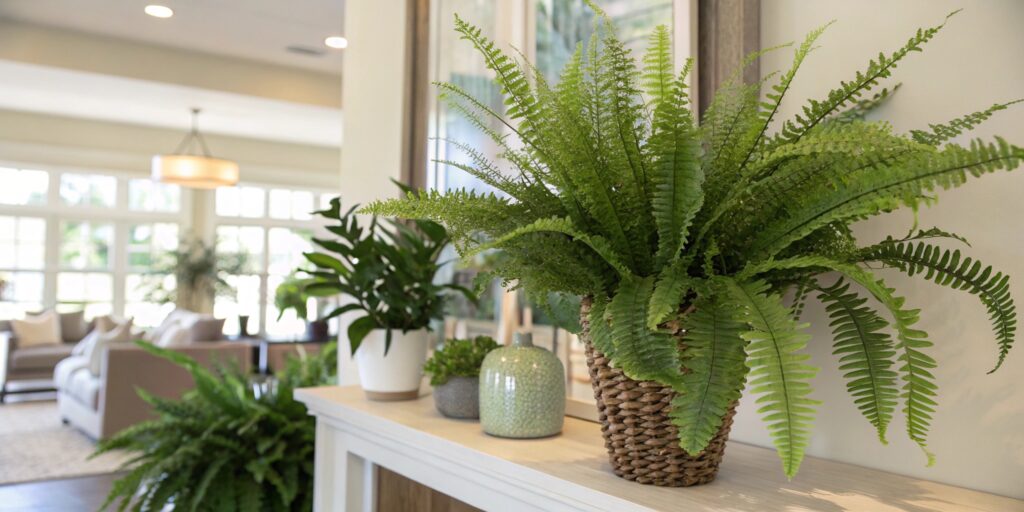
Main Strategies to Save Cost on Artificial Plants for Business:
Because the artificial plant market has to manage costs while providing high quality. Follow these tips to turn a profit (and save some money while you do it) when you work with faux plants.
1. Source Directly from Artificial Plants Manufacturers
Skip the middleman markup by sourcing directly from reputable manufacturers. Many quality artificial plant makers sell directly to consumers online. Having good relations with artificial plant manufacturers can help you get more advantageous pricing and terms. You can also participate in international trade shows to meet manufacturers in person. That gives you a chance to cut deals and look into other products.
2. Bulk Faux Plants Purchasing and Negotiation
You can buy in larger quantities and unlock significant savings. Many manufacturers will offer bulk price breaks, which will lower your per unit price point significantly. Don’t be afraid to negotiate payment terms orshipping costs. These options often have better terms, making the cash flow more manageable and less financially draining,
3. Optimize Artificial Plants Shipping and Logistics
You can group your orders to fill shipping containers, maximizing space and reducing shipping costs on a per-unit basis. This works particularly well for wholesalers with high transaction volume. Collaborate with your logistics partners to determine the most affordable shipping routes and techniques, balancing speed versus cost.
4. Diversify Artificial Plants Range
You can stock various species from entry-level faux foliage to expensive artificial plant collections. This diversification can help in approaching more types of customers and meet up with market demands. Following trends in your industry to make sure your product offerings are in line with the current needs of the market.

2025 Artificial Plant Market Trends and Pricing
“According to Market Research Future, the global artificial plants market was valued at USD 0.82 billion in 2023 and is projected to grow to USD 1.51 billion by 2032, with a CAGR of 4.18%. New manufacturing technologies reduce costs while improving quality. Advanced 3D printing techniques and AI-assisted design are creating more realistic options at competitive price points. Premium artificial plants are more accessible to average consumers.
Frequently Asked Questions on Fake Plants
People usually ask about the maintenance, life span, and works of artificial plants before buying them. Below, we answer some frequently asked questions to help you decide.
Q1: How Durable Are Artificial Plants?
The artificial plants are known for their enduring nature. Constructed with high quality silk, polyester, and PVC through multi-process, these plants will stand up to different environment conditions without fading or getting worse. Whether you choose silk tropical plants or big faux plants, you can be sure they will last for 5-10 years to come.
Q2: How Do I Clean and Maintain Artificial Plants?
Cleaning artificial plants is straightforward and requires minimal effort. You can use a clean soft cloth or duster to gently dust the leaves and stems occasionally. And, if you’ve noticed a build up of dust and grime, you can wash the plants with a purposeful mix of soap and water.
Q3. Do Artificial Plants Look Real?
High-quality artificial plants, including silk floral plants and silk fake plants, are designed to resemble real plants as closely as possible. Improvements in materials and manufacturing techniques means that designs can be so life-like that it may not be easy to tell them from real environmental elements.
About FeelReal Artificial Plants
Here’s what makes us different: we offer premium quality at prices that are typically 5-10% below industry standards. By working directly with manufacturers and cutting out middleman markups, we pass those savings on to you. You get the same attention to detail and quality materials that luxury retailers charge premium prices for, but without the inflated costs.
Contact our team for personalized recommendations and bulk pricing options for your specific artificial plant needs.
